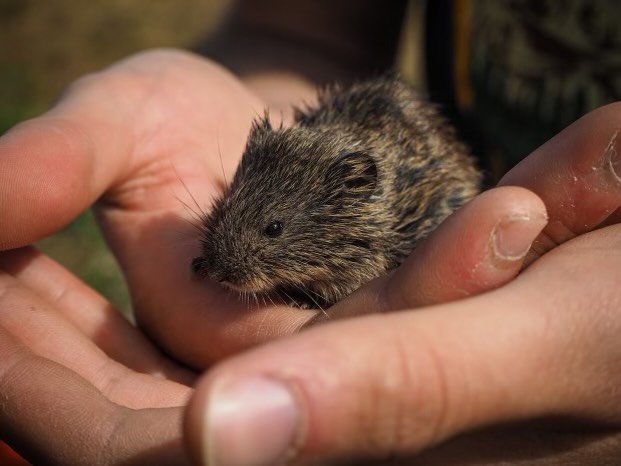Tracking the impacts of climate change on food webs in high-latitude ecosystems
January 3, 2024 - Geneva Sandoval
New research from the USDA Forest Service Pacific Northwest Research Station, the UNM Center for Stable Isotopes (CSI), the Museum of Southwestern Biology, and the University of Texas at Austin, adds to the growing body of literature documenting the impacts of climate change on food webs by studying the influence it has had in high-latitude ecosystems.
The research, titled, Climate warming restructures food webs and carbon flow in high-latitude ecosystems, is featured in Nature Climate Change. Adjunct Professor in the Department of Biology and Research Scientist with the USDA Forest Service Pacific Northwest Research Station, Philip Manlick, led the study.
Co-authors include Nolan Perryman, who earned his MS in Biology this past spring; Distinguished Professor of Biology and Curator of Mammals at the Museum of Southwestern Biology, Joe Cook; Professor of Biology and Co-Director of CSI, Seth Newsome; and Assistant Professor of Biology, Amanda Koltz, from the University of Texas at Austin.
Their research shows that climate change is significantly affecting ecosystems in Arctic tundra and boreal forests that support animals adapted to the frigid winter temperatures in these northern areas. Warming has altered the food webs that these animals have relied on for thousands of years, thereby impacting the entire ecosystem around them.
Rising temperatures are melting the permafrost, or frozen soil, which is allowing bacteria and fungi to break down soil that has been frozen for thousands of years. This has resulted in an increase in “green” plant growth as well as more “brown” energy, or energy derived from microbial decomposition of permafrost and plant material.
It was previously unknown how these changes in plant and microbial resources impacted animals in these ecosystems, but new research shows that food webs have changed dramatically.
 The study focuses on two crucial consumer groups: small mammals in boreal forests, examined over a span of three decades (1990 to 2021), and wolf spiders in the Arctic tundra subjected to experimental warming.
The study focuses on two crucial consumer groups: small mammals in boreal forests, examined over a span of three decades (1990 to 2021), and wolf spiders in the Arctic tundra subjected to experimental warming.
Through stable isotope analysis of museum specimens collected three decades ago and again recently, scientists were able to track the energy flow through food webs to animals over time.
Manlick says, “Small mammals like shrews and voles that were historically supported by "green" plant-based food webs now acquire almost all their energy from "brown" fungal food webs. When we looked at experimentally warmed spiders from the Arctic tundra, we saw the exact same pattern in a controlled environment. This tells us that warming has a consistent "browning" effect on food webs across species and ecosystems, and that museums and monitoring programs can be used to track changes in food webs.”
Surprisingly, despite the increase in “brown” food webs, the findings showed that animals are now mainly consuming recently fixed carbon instead of ancient carbon from thawing permafrost. This suggests that the impacts of climate change on ecosystems are much more intricate than expected.
It is unknown why there has been such an increase in “brown” food webs, but it is apparent that everything from soil invertebrates to mammals are consuming more fungi than they have historically. The question is what is supporting the growth of fungi?
Manlick explains, “We hypothesized it'd be ancient permafrost, but we don't see that in the radiocarbon data, which was surprising. The dynamics of permafrost [carbon] cycling are extremely complicated though, and our analysis here can't rule out permafrost decay as the driver of food web browning. It does suggest, however, that another mechanism such as increased decomposition of new plant growth could also be contributing to this phenomenon, but we need more research to understand how all these changes are related.”
Understanding these changes is vital for figuring out how these sensitive environments will respond to climate change. As rapid warming continues to reshape high-latitude boreal and tundra ecosystems, these findings provide crucial insights into the intricate interplay of carbon flow, food web structure, and nutrient cycling.
The research not only provides a foundation for future studies into this topic but also sheds light on how important museum specimens are to understanding the effects of climate change on these sensitive ecosystems.
